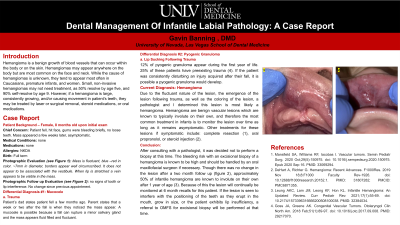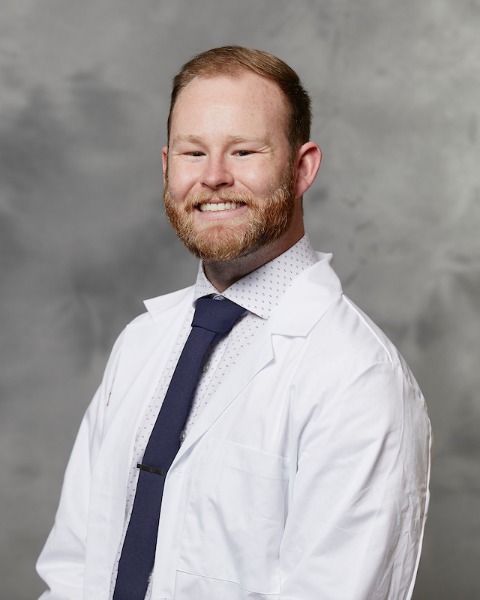Oral Pathology
367 - Hemangioma In Patient Less Than One Year Old


Gavin L. Banning, DMD
Pediatric Dental Resident
University of Nevada, Las Vegas, NV
University of Nevada Las Vegas School of Dental Medicine
Las Vegas, Nevada, United States- KK
Karl Kingsley, MPH, PhD, BBA, BA
Professor of Biomedical Sciences
University of Nevada Las Vegas
Las Vegas, Nevada, United States - LR
Lee R. Roundy, Program Director, Pediatric Dentist
UNLV SDM Pediatric dental residency
Las Vegas, Nevada, United States
Presenting Author(s)
Research Mentor(s)
Program Director(s)
Topic
Oral Pathology
Presenting Poster Author Category
Pediatric Dental Resident
Abstract:
Hemangioma is a benign growth of blood vessels that can occur within the body or on the
skin. Hemangiomas may appear anywhere on the body, but are most common on the face and
neck. While the cause of hemangiomas are unknown, they tend to appear most often in
caucasians, premature infants, and women. Small, non-invasive hemangiomas may not need
treatment, as 50% resolve by age five, and 90% self-resolve by age 9. However, if a
hemangioma is large, consistently growing over a period of time, and/or causing movement in
patient’s teeth, they may be treated by laser or surgical removal, steroid medications, or
embolization of the blood vessels.
This case consists of a 10-month-old female patient who presented to the graduate pediatric dentistry clinic with a 7-mm diameter, blue-red, fluctuant, vascular nodule on the upper lip. After consulting with a pathologist, it is believed this nodule is a hemangioma. After six weeks, the patient returned for a follow up; there was no change in the nodule when clinically observed by the pathologist and myself. Future management of this case includes monitoring the nodule at the patient’s 6-month recall appointments. If hemangioma growth, malposition of erupted teeth, or lip insufficiency is observed at recall appointments, the patient will be referred to oral and maxillofacial surgery for consultation and management of the nodule.
Identify Supporting Agency and Grant Number:

.jpg)